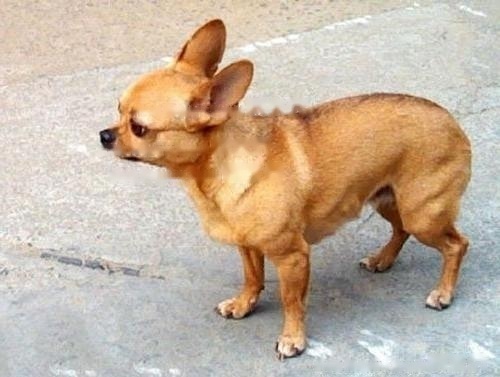Owners of dogs should have seen the scene of dogs running away with their tails tucked, so why do dogs have their tails tucked? As we all know, dogs have their tails tucked because of inner fear and fear, or because they are threatened. But why do dogs use the body language of their tails to express, what is the special meaning? And the tail is a symbol of pride and high status?

The answer is not in the dog's tail itself, but in the smell signal emitted near the dog's anus under the tail. When two dogs meet, they will raise their tails high, exposing them. Allow the other person to sniff out your own anal area. Since the anal area emits the unique smell of each dog that indicates its identity, clipping the tail to prevent the smell from emitting is like a human being unwilling to show his face when he feels inferior.
For a dog living alone in a human family, this expression is of little importance, but as long as a group of dogs live together, the hierarchical relationship is very important, and tail clipping becomes a This important signal is a humble expression of the weak in front of the strong.
No doubt this is especially important in wild wolves as well. A low-ranking wolf will hang its tail as it approaches a higher-ranking wolf, and when it approaches a head wolf it will have to tuck its tail tightly between its legs until it is close to the head. The wolf dared to lift its tail again when it was far away.
There is an interesting difference in tail display between domestic dogs and their wild ancestors. On all wolf tails there is a special caudal gland located at the lower end of the tail surrounded by light, stiff fur. This black tail gland is made up of a group of mutated sebaceous glands that emit scent but do not secrete oil
?Like the anal glands, the tail glands are only involved in odor signals and are located on the outside of the tail . If the wolf keeps approaching another wolf with its tail tucked, the scent from its tail gland can still be smelled by the other, but the scent from its anus is gone. If there is no such tail gland, it can be seen that the odor signal of wolves is much more complex than that of dogs.
??Why the tail glands of dogs degenerate is still a mystery. As for the other changes that have taken place in the evolution of dogs from wolves in 10,000 years, they were all deliberately selected due to human needs, and the result is the so-called purebred dogs we see today. However, the function of the wolf's tail gland has only recently been discussed, so it is unlikely that it would have caught the attention of breeders of new breeds centuries ago. Still, it's safe to say that the tail glands disappear in dogs very early on, as all dogs today are tail glandless. Regarding the raised tails and drooping tails of dogs and wolves, their primary function is undoubtedly the signal of odor control, but as a secondary visual signal, it cannot be ignored.
![[Dog Training 5] The training method of pet dog dining etiquette](/static/img/12192/12192_1.jpg)




